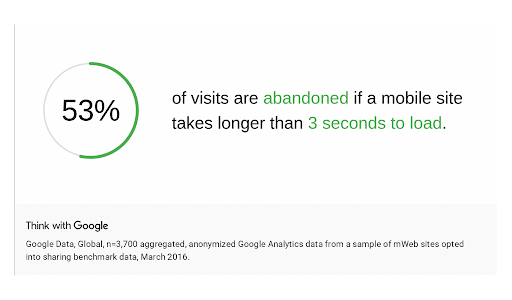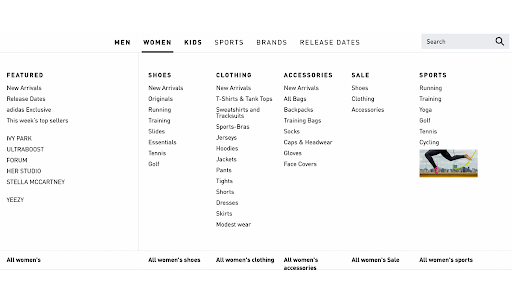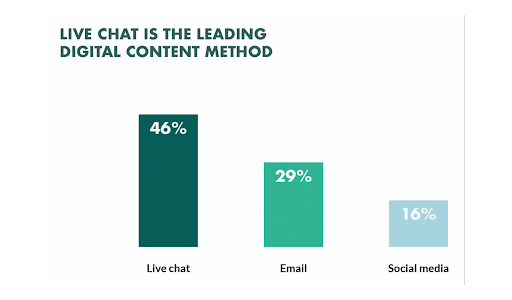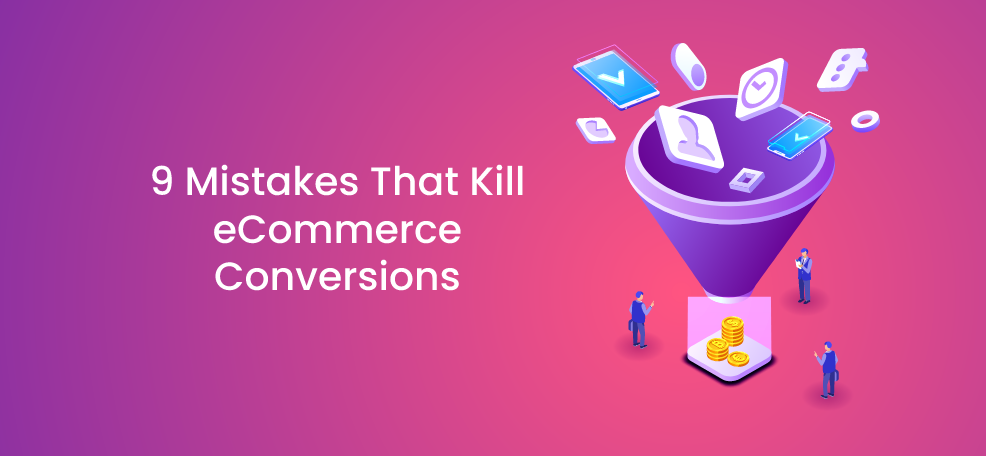Ecommerce businesses are constantly seeking ways to boost their conversion rates.
But many eCommerce businesses unknowingly make costly mistakes that can lead to a decrease in conversion rates.
In this article, I will share the most common mistakes that eCommerce companies make, and how to correct their course to improve their online sales.
Understanding eCommerce Conversions through Data
When it comes to understanding eCommerce conversions, data is key.
Kibo’s latest Q3 2021 eCommerce Quarterly Benchmark Report provides some valuable insights into the current state of conversion rates and how businesses can improve their performance.
- Mobile sessions now make up almost 75% of all browsing sessions
- Abandoned cart for mobile phone remains the highest at up to 86%
- Bounce rate from social channels increased from 41% to 44%
- Bounce rate from search remains the lowest at 29%
Mobile browsing has been increasing, and it is now more than 75% of all browsing sessions. This means that if you are not optimized for mobile, then you are missing a lot of potential sales.
The bounce rate from social channels increased to 44%, but the bounce rate from search remains lowest at 29%. This shows that businesses should incorporate technical tips for search engine optimization and capture highly converting customers. You can also check out this beginner’s guide on how to start optimizing your website for SEO.
So, what are the mistakes that most commonly kill eCommerce conversions?
1. Not Making Mobile Optimization a Priority
Mobile sales are growing exponentially, but businesses are still not making mobile optimization a priority, which is why they are losing out on sales opportunities that could really help them grow.
Ensure that your website is mobile-friendly by using a mobile responsive design and making it easy to navigate. Also, look at your product page and check that your potential customers are getting enough product information and detail even when they are browsing from a mobile device. As mobile screens are smaller, when you plan your mobile layout, prioritize and position key elements you want customers to see.
Lastly, make sure that the checkout process on mobile is seamless and easy for the customer to complete.
2. Having a slow loading website

Did you know that 53% of visits are abandoned if a mobile site takes above 3 seconds to load? Think with Google’s data shows that that’s all it takes to potentially lose a new customer.
A slow-loading website can be one of the biggest turnoffs for potential customers, as they will quickly lose interest and move on to another site. This is why you should always strive to have a fast, optimized site.
There are several factors that can affect the speed of your website, so it’s important to optimize each element of your eCommerce store to increase speed performance. You can conduct a site speed test to make sure that your site speed health is good.
Some ways to improve site speed are making sure your images are compressed, reducing the number of redirects, removing broken links, and improving your hosting. If you are using videos, make sure to embed them instead of uploading them directly on your website.
3. Difficult to navigate and find what they need

If your website is difficult to navigate, customers will quickly lose interest in your site. They want to be able to find the products they are looking for at a quick pace.
This means that you should allow them to shop however they like by offering several ways for customers to search your site. This includes product
categories, collections, price range, color, or other options. The above example from Adidas shows clear navigation where customers can easily find what they are looking for, where they can shop according to gender preference and specific product categories.
A search bar can also be included to help consumers find a specific model in your store. Your website’s success hinges on making sure that people can easily navigate your site and find the products they want, so making sure the user experience is effortless is key.
4. Failing to highlight selling points in the product page
Customers need to have sufficient information to decide on buying a product, particularly when they cannot see it in person. Ensure that all of your product pages feature detailed descriptions and high-resolution pictures that allow the customer to easily visualize how the product looks in real life. Make sure that the images taken are attractive and appealing so that they draw the customer in and motivate them to buy.
When it comes to writing product descriptions, including key benefits is essential. By listing the key features and benefits of your product, you can persuade potential customers to buy your product. Using AI copywriting software is an easy way to help you create persuasive bullet points that will capture your customer’s attention.
An additional tip is that you can also incorporate videos to help engage shoppers who may be on the fence about making a purchase. Videos (remember to embed it) really help to drive customer interest and excite customers in visualizing how a product works.
5. Lack of customer reviews & testimonials
How important are customer reviews for an eCommerce store?
Here’s the data from Invesp – 72% of consumers will take action only after reading a positive review, and customers are likely to spend 31% more on a business with excellent reviews.
If you don’t have customer reviews and testimonials on your product pages, then you’re missing out on one of the most persuasive tools that online retailers can use. People like to read reviews from other shoppers who have purchased a product before them as it helps them build trust and make a more informed decision.
You should also encourage customers to leave reviews after their purchase by incentivizing positive reviews or offering coupons & discounts in return. If there are any negative reviews, remember to leave a professional response that outlines how you will rectify the situation.
6. Not being responsive in live chat

Live chat is the leading digital content method, with over 46% of respondents now choosing it as their preferred method of communication, compared to 29% via email and 16% via social media.
Many customers don’t like to pick up the phone and call a customer service rep if they need help with something. Emailing customer support also has too many extra steps involved. They would much rather type in their question into your website’s live chat button and speak to someone immediately.
Having a live chat feature on your website gives shoppers the ability to clarify any questions they have before buying the product and get them answered in an instant. You can automate your live chat feature by providing answers to frequently asked questions, and they can choose to speak to someone directly if their question isn’t on the list.
Live chat triggers impulse buying because customers can ask questions and get answers before making a purchase. This type of instant feedback is very compelling and will increase conversions.
7. Not using exit intent pop ups
Exit popups are one of the most important tools you can use to convert more visitors into paying customers. Exit-intent pop ups only trigger when a customer is about to leave your site without making a purchase, offering them an incentive or coupon code to get them back and encourage them to convert.
Exit intent pop ups are an effective way to re-engage customers who are on the verge of leaving your site without making a purchase. You can drive conversion by offering a promotion to a customer who is interested in buying but wants to wait for a better deal. By giving them a promotion, they may just change their mind and purchase it now!
8. Lack of payment options to choose from
One of the most common reasons why people do not make a purchase online is because they are unsure about the security of the payment process. This is why businesses need to offer a variety of payment options, such as PayPal, Google Pay, Apple Pay, and credit card.
You should also ensure that your website is secure by using an SSL certificate and that your payment gateway is PCI compliant. Being PCI compliant helps to protect customers’ card data, reduce the chance of a data breach and offer security standards to follow. This will give your customers peace of mind and make them more likely to complete a purchase on your site.
9. Checkout process is too long or complicated
If customers have trouble executing their purchase or there are too many steps involved and too many forms to fill just to purchase an item, they will quickly abandon your website and head elsewhere.
Ensure your checkout experience is straightforward and make it simple for customers to complete the payment process. Emphasizing that the customer can have free returns is also an added bonus that will help drive conversion rates.
Another thing you can do to reduce checkout abandonment is to provide a guest checkout option, and not mandate that the customer has to create an account to buy. The checkout process should be designed to speed up the buying experience for your customers and keep them coming back.
Improve conversions now by taking action
The best way for eCommerce firms to increase their conversion rates is by understanding why consumers do not complete purchases. It’s important that businesses take remedial action to correct them because this will lead them down the path of increased sales on online platforms!
Author Bio

Chloe Teo is a writer and a Channel Sales Manager. With 9 years of B2B experience in tech, she helps businesses grow sales exponentially. Her passion is to help buyers make better purchase decisions by writing reviews about software and gadgets at ChloeTeo.com.




